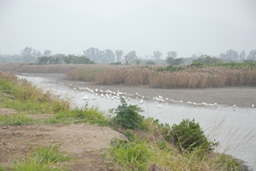How We Built a Robot and an Algorithm to Tame Membrane Proteins
Published in Bioengineering & Biotechnology, Microbiology, and Cell & Molecular Biology

Membrane proteins are the gatekeepers of life. They enable cells to communicate with one another, sense their environment, and respond to various stimuli, including drugs. It is no wonder that over half of FDA-approved drugs target them. Yet, these proteins remain notoriously difficult to study. Their natural home is within delicate lipid bilayers, and forcing cells to overproduce them often leads to misfolding, aggregation, and time-consuming purification steps that risk damaging the very proteins we need.
To tackle this bottleneck, we turned to cell-free protein synthesis (CFPS), a method in which all the cellular machinery required to produce proteins is extracted and repurposed outside of living cells. Add a plasmid encoding your protein of interest, mix in liposomes to mimic membranes, and you have a simplified system to make membrane proteins directly into pure lipid environments. No cells, no purification. Problem solved?
Not quite.
From Trial-and-Error to Scalable Solutions
CFPS offers speed, flexibility, and purity, but getting membrane proteins to fold correctly outside their cellular context isn’t trivial. Cells finely tune their internal chemical environment to guide protein folding. Once we step outside that context, we are left asking: what is the right “recipe” to help membrane proteins assemble correctly?
We quickly realized that brute-force testing—trying every possible combination of salts, chaperones, crowding agents, and lipids—wasn’t feasible. With hundreds of possible conditions and proteins from different organisms (bacteria, plants, humans), we needed more than two pairs of pipetting hands.
Enter Dobbie: The Hulk with a Delicate Touch
So, we built a robot.
Dobbie began life as a humble conveyor belt robot, designed for tasks far less glamorous than membrane protein science. But with some ingenuity (and more than a few headaches), Conary, the co-first author of this project, transformed Dobbie into a precision droplet printer. Picture a robot with the force of the Hulk, calibrated to gently dispense 60 nanoliters of liquid, just enough to land perfectly in the wells of a 384-well plate.
Building Dobbie was a project of its own. In fact, after completing this study, Conary made it his post-PhD mission to develop more Dobbies for labs needing high-throughput screening on a shoestring budget.
Thanks to Dobbie, we could now run over 1500 cell-free reactions a day, using minimal reagents. To measure protein production, we used Waldo et al.’s split-GFP system: our proteins were tagged with a small GFP fragment (GFP11), and we added the complementary GFP1-10 to generate a fluorescent signal upon successful synthesis. Simple plate reader measurements revealed which conditions worked.
The Birth of MEMPLEX: Learning from Every Protein
What Dobbie helped us discover is that there is no universal “one-size-fits-all” recipe for membrane proteins. Each protein had its own preferred chemical environment. However, we wondered: could we learn from these patterns? Could data from past experiments help guide the synthesis of new, untested proteins?
This question gave rise to MEMPLEX, our Membrane Protein Learning and Expression platform. Using machine learning, we trained an algorithm to identify which protein features correlated with successful synthesis. Simple characteristics, such as size or the number of transmembrane domains, were not enough. Instead, we had to dig deeper, focusing on the structure of the proteins and extracting features like the hydrophobicity of membrane-contacting amino acids. As expected, a protein’s relationship with the lipid bilayer turned out to be key.
With these insights, MEMPLEX can now predict whether a new protein is likely to be successfully synthesized within our platform. While it can’t yet suggest perfect reaction conditions without initial screening, it dramatically streamlines the optimization process, making future experiments faster and more targeted.
Dobbie Lives On
.jpeg)
For me, this project was more than platform development. It was a bridge. As a new PhD student joining this work alongside a colleague finishing their PhD, MEMPLEX became a vehicle for knowledge transfer. Today, I use Dobbie for my own experiments, studying protein synthesis on artificial extracellular vesicles. The tools, workflows, and lessons from this project continue to evolve and support new research.
What’s Next for Membrane Protein Synthesis?
Our journey with MEMPLEX shows that while membrane proteins resist simple solutions, combining high-throughput experimentation with machine learning can transform a messy trial-and-error process into a systematic, predictive workflow. This approach holds promise not just for academic curiosity, but for accelerating drug discovery, biomaterials engineering, and understanding the fundamental biology of membrane proteins.
And as for Dobbie? He’s still hard at work, quietly (and precisely) printing droplets, sixty nanoliters at a time.
Follow the Topic
-
Nature Communications

An open access, multidisciplinary journal dedicated to publishing high-quality research in all areas of the biological, health, physical, chemical and Earth sciences.
Related Collections
With Collections, you can get published faster and increase your visibility.
Women's Health
Publishing Model: Hybrid
Deadline: Ongoing
Advances in neurodegenerative diseases
Publishing Model: Hybrid
Deadline: Dec 24, 2025





Please sign in or register for FREE
If you are a registered user on Research Communities by Springer Nature, please sign in